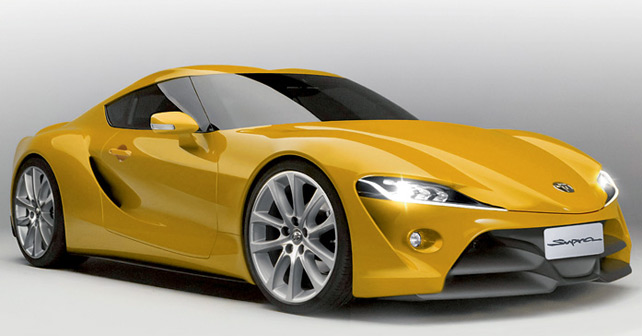15 years after the fourth generation, this classic Japanese coupe is making a comeback – but this time with links to a certain BMW.
Two years after signing the memorandum for battery research (see the bottom of the facing page), and well over a decade after the end of production of the fourth generation Supra, the fifth generation of this iconic sports car from Toyota begins to take shape. And while it’s expected only by the end of 2017, we can already reveal some details.
The final touch
If, according to the technical agreement, the responsibility of the packaging of the new platform is to be done by the Germans (and, of course, the design for what is being heralded as the successor to the Z4), the Japanese are committed to personalize the future flagship of their sports car range – announced by the concept FT-1, presented at the Detroit Motor Show in January. Naturally, though, there will be a fair amount of ‘BMW influence’ in the reborn Supra – such as construction techniques developed for BMW’s electric ‘i’ range (a platform of steel and aluminium, with carbon fibre bodywork) and a four-cylinder two-litre turbocharged engine that will form the heart of both the Z4 and the Japanese coupe. In the Toyota, however, the engine will act as a thermal unit of a hybrid plug-in powerplant – which will have a total output of over 350 horsepower. In its most advanced state, it powered the TS040 race car that competed in this years’ 24 Hours of Le Mans. The Toyota racer is powered by a generator at the front and another on the rear axle, which recovers energy during braking to send it to a super-capacitor. The super-capacitor – thanks to high speed charging and discharging – makes the energy available in the acceleration phase, to accompany the power delivered by the combustion engine.
Only hybrid
The expectation is that the Supra will use a limited version of this system, coupled – for the first time on a Toyota – to a dual-clutch gearbox. Effectively, this will make the Supra an all-wheel drive vehicle – ostensibly contradicting what Tetsuya Tada, chief engineer of the GT86 project, said about the next-gen Supra. The new sport car will have three electric engines – two in front, with torque vectoring, and one at the rear.
Rumor has it that the Supra will be offered exclusively as a plug-in hybrid – which makes sense, given Toyota’s strength in this area. Moreover, they’ll be trying to differentiate the Supra from its German cousin. The electric motors will be designed by Toyota, but built by BMW.
The weight target set for both cars is under the 1,400kg mark. Like the GT86, built on Subaru mechanicals, the next Supra will also use a platform and powertrain developed by another manufacturer – while Toyota will stamp its mark through design, hybrid technology, and trim. The good thing is that the biggest brand in the business has begun to believe in the emotional appeal of cars once again!
History
It started out as a Celica,and became a legend in 1993.

The first generation was a ‘Sport’ version of the Celica – featuring in-line six-cylinder engines under the hood

Still based on the Celica, but with increased dimensions and a reshaped front end

The third generation is a standalone model. The new chassis retains
rear-wheel drive

It becomes a proper high-performance sports car. Produced until 2002.
2017
The fifth generation is expected to be launched by the end of 2017
Halo Effect
Once upon a time, there was the 2000 GT, the naughty Celica, MR2, and the Supra – those were the golden years for the Toyota brand. Well, they now want to renew this lost emotional appeal. The new Supra will join the GT86 to fulfil this task
The Munich Accord
LET’S GET TOGETHER TO MAKE A SPORTS CAR
Initially (December 2011), the Memorandum of Understanding between BMW and Toyota was merely limited to a medium / long-term collaboration for joint research in the field of lithium-ion batteries and for the supply (by the Germans) of 1.6 and 2.0-litre diesel engines. In June 2012, this cooperation was extended to include the electrification of propulsion systems, research in lightweight materials, as well as the joint development of fuel cells and a sports car. By the end of 2013, the development of a common platform was well underway – objective achieved!
© Riproduzione riservata





















Write your Comment